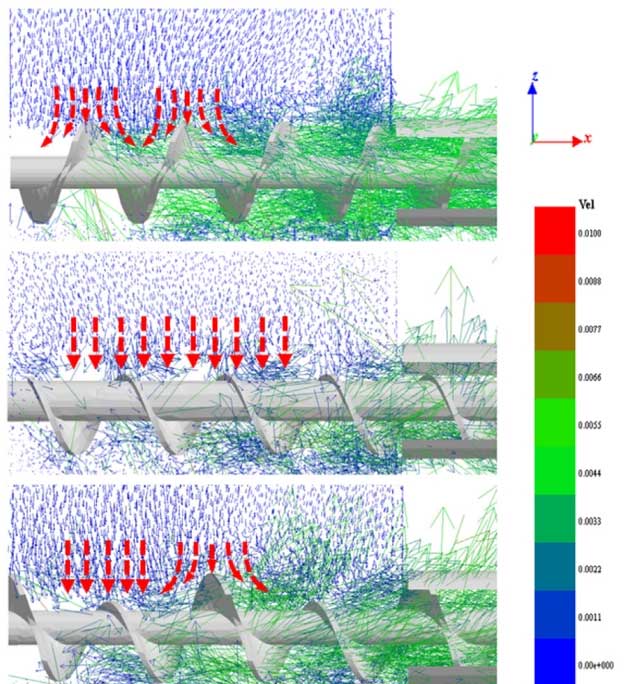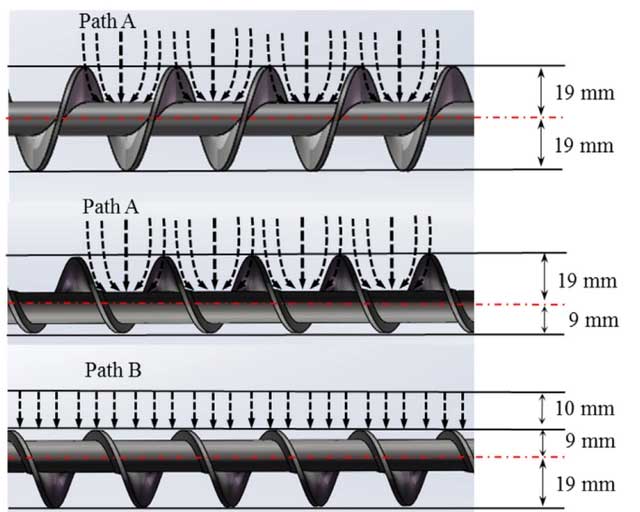Most manufacturers have doubts about the selection and design of the screw conveyor, which leads to blockage, fast wear, and low equipment efficiency during the operation of the conveying equipment. Many manufacturers do not have a basic understanding of the fluidity and details of materials on screw conveyors. They think that the movement process of materials is very simple, and high-efficiency screw conveyors can be designed and manufactured without a lot of theoretical knowledge, resulting in screw conveyors. The root cause of the final failure to meet the needs of users.

What needs to be done before designing the screw conveyor?
Before designing the screw conveyor, the designer should be proficient in certain characteristics of the material, which determine the transmission efficiency of the material in the conveyor. To improve the performance of the screw conveyor, it is necessary to measure and analyze the material, to provide a reference for the improvement of the screw conveyor.
Physical parameters
Physical parameters include material viscosity, particle size, etc., material corrosiveness, whether the material is bonded and hardened during transportation, flammability, explosiveness, etc., whether there is static electricity, and the fluidity of the material.
Material viscosity
Among them, material viscosity is the most important physical parameter. The fluidity can be tested by a simple method. Put the material on a stainless steel plate, then try to drive the material forward. By judging whether the material is easy to operate and whether it is bonded, the fluidity, viscosity, etc. of the material are tested—preliminary test. For materials, the most important physical parameters are temperature and humidity. Only a basic grasp of these physical parameters can ensure that the produced conveyor can transport materials efficiently and reliably.
Delivery capacity
The user provides the mass delivery amount, calculates the required volume delivery amount within an hour, uses the conveyor to select the recommended filling rate, selects the appropriate screw diameter, and sets the rated speed of the conveyor. Parameters such as conveying speed and required space size can be considered in the design, to meet different process requirements. The maximum conveying capacity is generally related to the diameter of each screw and is also affected by the type and size of the screw pitch and the nature of the material being conveyed.
Material particle diameter
The diameter of the material particles determines the screw conveyor. Since the material particles must be able to pass through the blades and troughs, large particles require a large-diameter screw conveyor, and finer particles can use a smaller-diameter screw conveyor. The average particle size of the particles has a linear relationship with the thickness of the material layer. The particle size is determined according to the largest block or flake of the conveyed material. Therefore, it is necessary to determine these smallest pieces or flakes before measuring the particle diameter of the material. When measuring the particle size, find out the maximum block degree or slice degree, and measure the maximum contour size. For substances with different particle sizes and shapes, different methods are used for analysis and research. If the shape of the particles is irregular (for example, one side is larger than the other), choose two medium and large for measurement.
The nature of the material
The nature of the material must also be taken into account. Some materials have hard blocks, which will not be crushed during transportation. These situations require the use of suitable screw conveyors for transportation. Some materials have fairly hard parts, but were broken during transportation. Understanding this will help the designer better size the helix.
Whether the conveying material is dense
Whether the conveyed material is dense or not is mainly to judge the conveying capacity of the screw conveyor. The conveying capacity of the screw conveyor adopts m3/h volume. The delivery volume required by most users is mass delivery volume, and designers have higher requirements for volume delivery volume. Therefore, it is necessary for designers to convert mass delivery volume into volume delivery volume. Therefore, accurate density is the key to the screw conveyor transmission. Quantity is the key. Designers also need to know how far the material travels in order to determine the length and shape of the helix.
In addition to the above factors, there are other factors, including the discharge location of the screw conveyor, the need to set a chute or a diversion valve at the material outlet, the type of hopper, the form of the cover plate, insulation requirements, etc., the design has a shaft or no shaft, whether it is Whether to heat or cool the jacket, etc., such issues must be considered before design, in order to be able to design a screw conveyor that works well.
Final words
Only after long-term technology accumulation, process precipitation, and talent gathering, can we have solid theoretical knowledge and rich practical experience in the research and development, and design of screw conveyors.
